This is the fourth blog in a series talking about how video streaming data, pulled from various parts of the workflow, can be used to support business goals. The next post will explore how to optimize your video advertising from increasing your inventory to upping your CPMs and optimizing streaming revenue.
Streaming platforms don’t exist for altruistic reasons. They are businesses that want and need to generate revenue from the content which is consumed through their apps and services. This is why it’s so critical to be able to tie in data generated from within the workflow to business objectives because it not only allows measuring the ROI of specific content titles, but it provides a true basis for understanding the bottom line.
And although streaming revenue platforms differ in many respects, there are two business needs which many of them share: balancing content types and encouraging new subscriptions.
Balancing Content Types
If your streaming revenue platform consists of multiple content monetization strategies, for example, AVOD (ad-supported video), SVOD (video only available to subscribers), and TVOD (videos purchased and downloaded), you can use the data within your delivery workflow to maximize the potential of each video type.
Start with taking the subscription rate as the number of unique users (who are current, paying subscribers) and have playback start events. This is your baseline. Once you have that, you can experiment to see how content availability within the different video types impacts revenue. For example, you can change some of the titles in the SVOD library to AVOD to make them available to non-subscribers. Also, you can do the opposite and put some of the normally free, ad-supported content behind the paywall to increase the value proposition for subscribing. With your experiment parameters set, you can target a subset of users based on their user ID or device ID.
Once you’ve completed this experiment, measure the impact by looking at the user ID and device ID targeted with these experiments. This can reveal how the changes impacted revenue (i.e., ad revenue lost versus subscribers gained). Furthermore, you can extrapolate to understand revenue-per-user, per minute, and conversion rate over time. Of course, experimentation involves iteration. With a steady flow of streaming behavior and delivery data, you can modify the experiment as you fine-tune the content balance across your video types. Some additional experimentation parameters can include ad-supported subscription tier (i.e., will users pay a lower subscription amount for limited ad inclusion), pricing of subscription tiers (i.e., will users pay a different amount for more access to content or for increased simultaneous device support), and the number/duration of ads.
Encouraging Subscriptions
There is no doubt SVOD will net the most long-term and sustainable revenue per minute. A primary goal then is to encourage subscription. One way to do that is to target marketing efforts toward users who are more likely to subscribe. Consider the following scenarios:
- Ad-skipping. Users who frequently skip ads can be targeted with ad-free subscriptions, especially if they have many minutes viewed per month. In that case, they clearly see the value of the content but would rather not see the ads.
- Win-backs. Part of any subscription service involves users who let their subscriptions lapse (or deliberately unsubscribe). Understanding why provides a clear opportunity to re-engage with those users and offer them an incentive to reactivate their subscriptions. For example, given their past viewing behavior (again, tied to that unique User ID), you can identify content-related behavior, such as favorite title, genre, actor, etc., and recommend content to them.
- Different subscription tiers. For users who may watch sporadically or infrequently, you could experiment with different subscription types. Perhaps something much cheaper and based on the number of hours viewed each month.
Your Viewer Data is Tied to The Health of Your Streaming Revenue
Of course, the data gleaned from within the streaming workflow is integral to ensuring operational reliability, consistency, and high-quality viewing experiences. But that data is also foundational to the health and growth of the streaming business. Why? Because it provides unparalleled insight into what your viewers are actually doing. Are they watching ads? Are they watching specific content? Are they logging in each day? Data from the player, CDN logs, and other streaming technology stack components can answer those and other questions so that you can better fine-tune your business to better align with how your subscribers want to interact with your platform.
The post The Relationship Between Streaming Data and Your Bottom Line appeared first on Datazoom.


